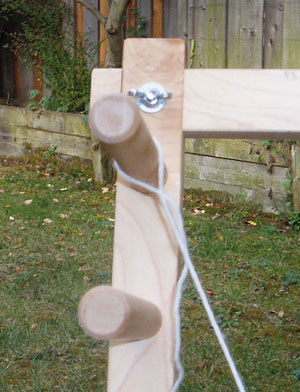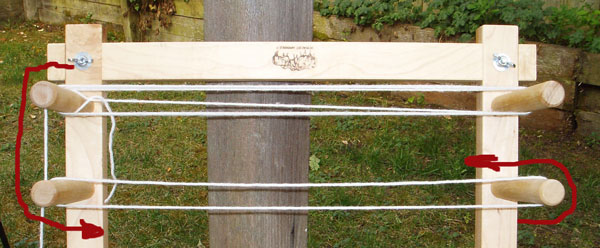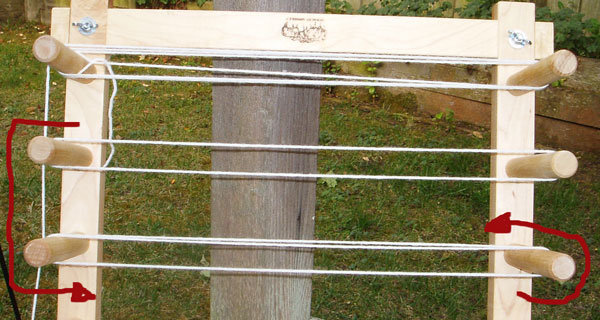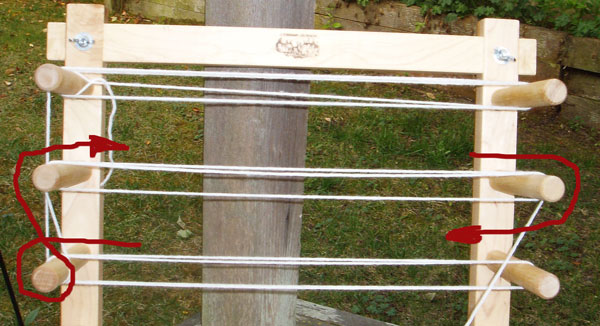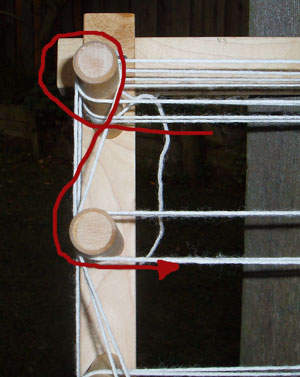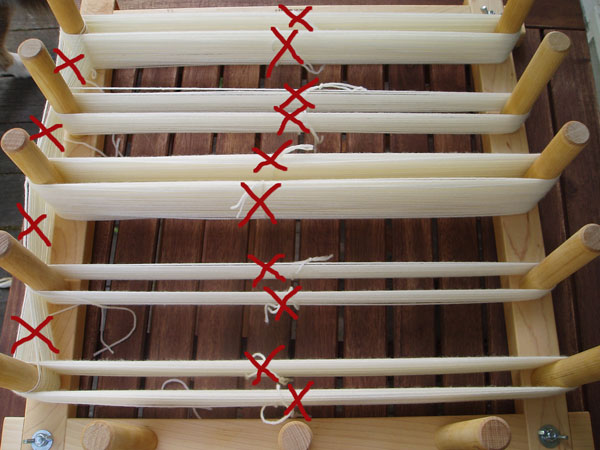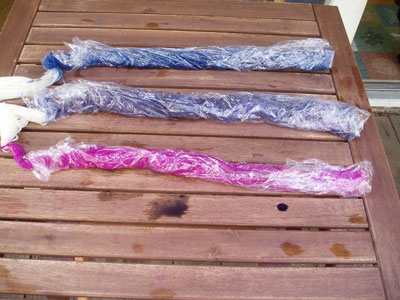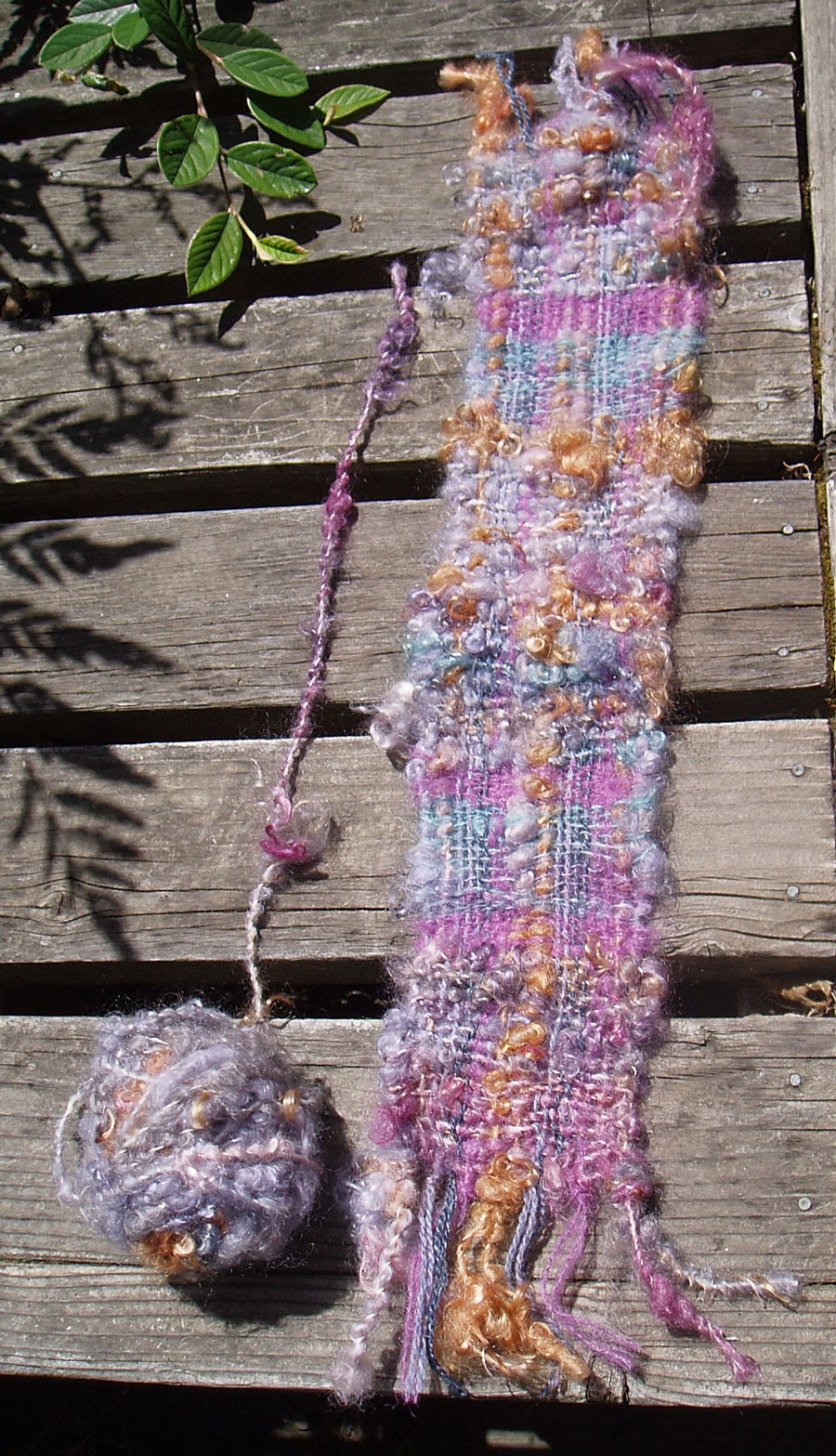 CNCH was great. I took Spinning for Weaving from Judith MacKenzie-McCuin. We spent a day talking about what the characteristics of warp and weft yarns. We did a little spinning.
CNCH was great. I took Spinning for Weaving from Judith MacKenzie-McCuin. We spent a day talking about what the characteristics of warp and weft yarns. We did a little spinning.
One of the things that we did was to play with mohair boucle. I’ve tried to make mohair boucle in the past, but have never been very satisfied with any of my end products. This time, I really exaggerated the boucle effect. It’s a bit much, but I like it. I will have to try again and tone it down just a smidge.
So, just how do you make mohair boucle? Take a core yarn, be it a single or a commercial yarn. I used a bit of left spun single (S twist), and then fed it back into the spinning wheel while “plucking” the mohair that is held in my left hand (same side as the twist in the core yarn) with my right hand, which was also controlling the core.
You can also use commercial yarn for your core. Just be sure that you spin the mohair in the same direction as the last twist in the core yarn. If it was a right twist yarn, spin to the right, use your right hand to hold the mohair, and pluck with your left hand that’s also controlling the core yarn.
Now, take the mohair “yarn” (It’s not yarn yet! It’s very unbalanced at this point), and ply it with another left twist single or yarn (S twist again). I used a commercial 60/2 silk. I hold the silk in one hand, and the mohair with the other at a 90 degree angle to the silk as I feed them both into the orifice. This causes the mohair to wrap around the silk core. This makes the boucle. Pretty, isn’t it? (Click to see a bigger picture)
For the weaving part of the workshop, Judith pulled out the warp weighted loom materials. This time, I know better. I know that (a) I don’t want to spend all day making little aquarium gravel packets, and (b) it’s not likely I will have the time to make a long piece. So, I made my warp from 9 lengths of yarn (18 ends).
I wanted a little sampler of hand spun and commercial yarns. Because I had visions of nice, lofty, and cuddly mohair blanket for the boat, I used some of my mohair boucle, some commercial brushed mohair, and then some silk/wool yarn spun by Shirley. I tried different textures in the weft.
I love the sampler. Using commercial yarn definitely extends the hand spun and adds textural interest. The resulting fabric is light as air.
CNCH wasn’t just about fiber. It was also a chance to hang out with friends, nosh on lots of food, drink wine, and lots of yakking. I roomed with Shirely, Michelle, Kathy, and Nancy. Unfortunately, we had a gatecrasher.
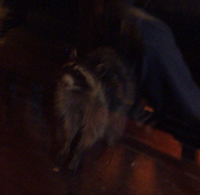
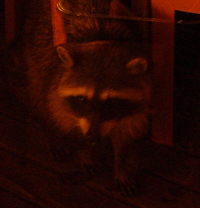
This little critter helped himself to our stash of cheese and fruit that we kept on the porch to keep cold. I caught him when he tried to take off with our wines. (Priorities! Of course, Kathy would have preferred that I saved her cheese.) These pictures were taken when he kept coming back, pounded on the window, trying to get more treats. These pictures are a bit blurry because I had to take them without a flash. Otherwise, you’d just get a pictures of the 5 of us in our jammies and giggling.

